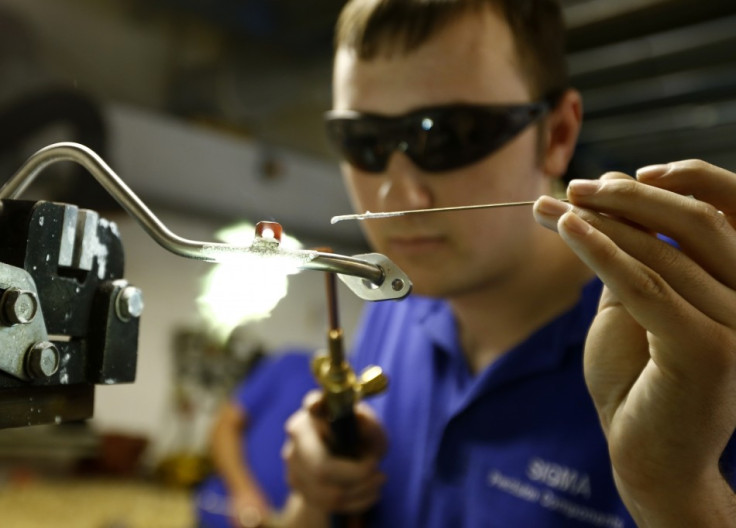UK Manufacturing Booms for Eighth Month Amid Recovery

Britain's manufacturing boom entered its eighth consecutive month in November as the sector's production and new order growth soared to 19-year highs.
UK manufacturing's purchasing managers index (PMI), compiled by financial research firm Markit and the Chartered Institute of Purchasing and Supply (CIPS), hit 58.4 for overall activity in the sector during November, up from the previous month's reading of 56.5. Any number over 50 signifies growth.
It is yet another sign that the UK economy is embarking on a broad-based, sustainable recovery from its post-financial crisis slump. Office for National Statistics (ONS) figures show GDP growth accelerating across the first three quarters of 2013, from 0.3% in the first to 0.8% in the third.
"Manufacturing recorded an all-round glowing performance in November, as continued growth in production and new orders saw rates at, or close to, 19 year highs," said David Noble, chief executive of CIPS.
"Success was consistent across all three sectors of the market and resulted in the biggest jump in employment levels in two and a half years. Improved confidence and positive macro-economic conditions, both in the UK and abroad, complete a positive outlook as we close the year.
"The sector's solid growth was primarily underpinned by a strong domestic market, boosting new business in the UK and giving manufacturers the confidence to look ahead to the future. This was coupled with new export orders from key overseas markets accelerating at one of the fastest rates since the financial crisis."
However, the sector's pace of recovery has left some shortages in supply of raw materials, which Noble said implies "supply chains still have some catching up to do with the market".
A recent report by manufacturers organisation EEF suggested access to finance is also hindering some of the sector's firms from expanding at a quicker pace.
EEF said in its quarterly credit conditions survey that the portion of businesses with no need to borrow fell to 40%, its lowest level since the report was started in 2007. However, the cost of credit rose to a balance of +11%, the highest reading since the end of 2012.
© Copyright IBTimes 2024. All rights reserved.






